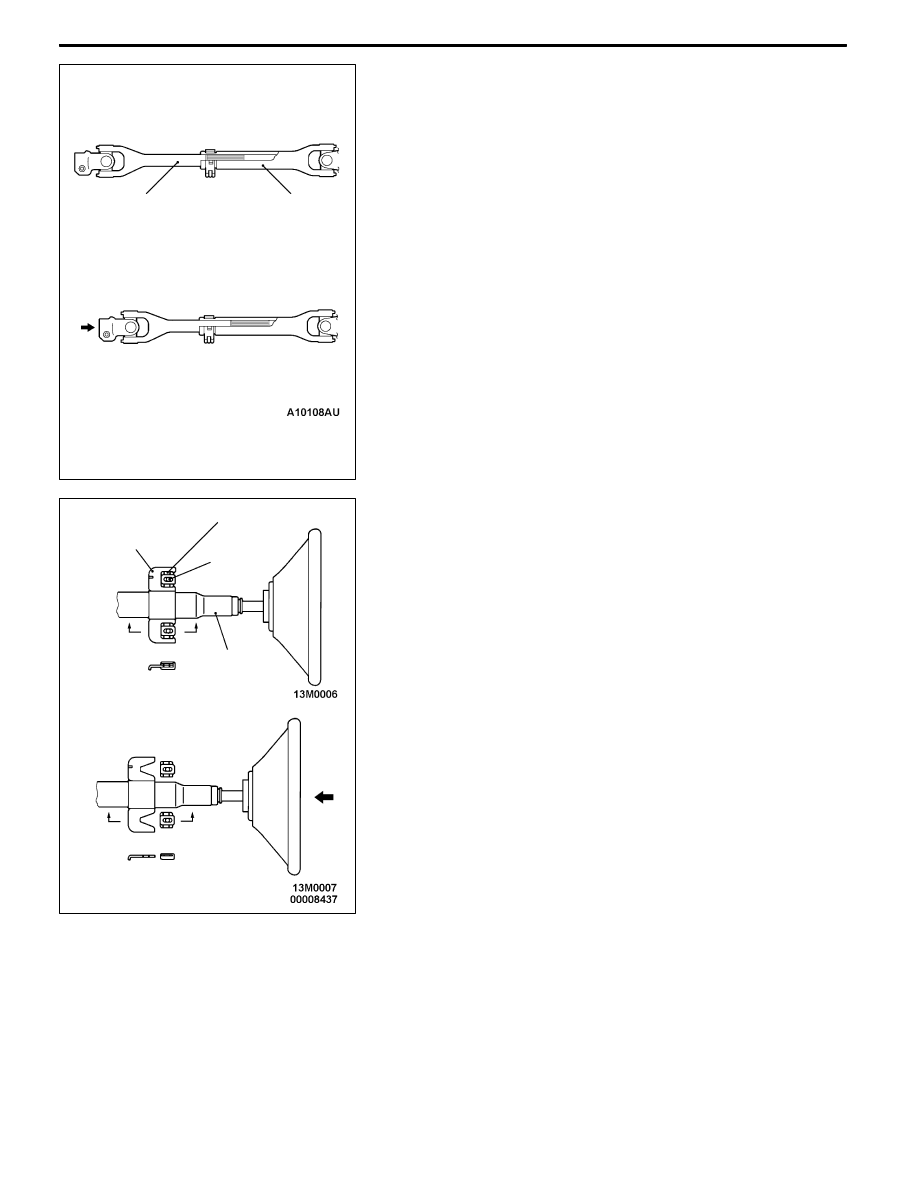Mitsubishi Lancer Evolution 7. Manual - part 23

DRIVE CONTROL COMPONENTS -
Power Steering
DRIVE CONTROL COMPONENTS -
Power Steering
3-11
SHOCK ABSORBING MECHANISM
1. Primary impact
When the vehicle collides with something and there is a load
added to the shaft sub assembly from the gearbox, the shaft
sub assembly slides above the pipe sub assembly to absorb
the shock load. This prevents the steering column from
moving backwards during the impact.
2. Secondary impact
(1) When the driver falls against the developed air bag, the
tilt bracket(A) moves forwards by shearing the polyacetal
resin, causing the steering column assembly to move
forward.
BEFORE COLLISION
AFTER COLLISION
Shaft sub assembly
Pipe sub assembly
Tilt bracket(A)
Polyacetal resin
Steering
column
mounting
bolt
Steering
column
assembly
Section A – A
Section B – B
A
A
B
B
Impact
load
BEFORE COLLISION
AFTER COLLISION